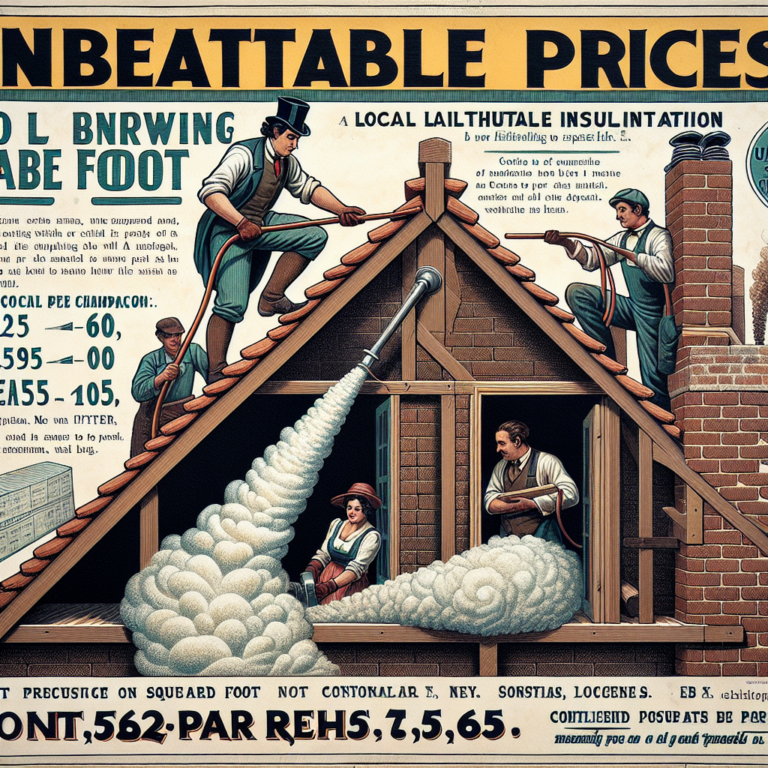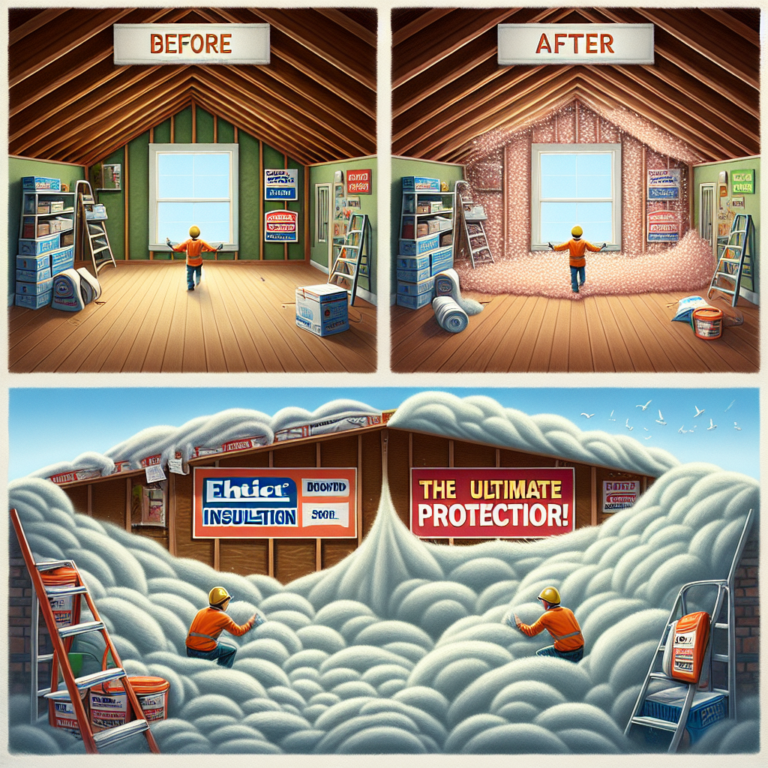Table of Contents
- Introduction
- Fiberglass vs. Spray Foam: Which Insulation Type is Best for Your Texas Home’s Attic Installation Process in Houston?
- The Pros and Cons of Cellulose Insulation for Attic Installation in Houston, Texas
- Understanding R-Values: How to Choose the Right Insulation Type for Your Texas Home’s Attic Installation Process in Houston
- Q&A
- Conclusion
“Stay comfortable and save money with the right insulation for your Texas home.”
“Ready to make your Texas home more energy efficient? Look no further than Texas Insulation Solution! Visit texasinsulationsolution.com to learn about the best insulation types for your home and start saving on your energy bills today.”
Introduction
Choosing the best insulation type for your Texas home is an important decision that can greatly impact the comfort and energy efficiency of your living space. With the extreme temperatures and humidity in Texas, it is crucial to have proper insulation to keep your home cool in the summer and warm in the winter. In this guide, we will discuss the different types of insulation available and help you determine which one is best suited for your specific needs and budget. By understanding the various options and their benefits, you can make an informed decision and ensure that your home is well-insulated for year-round comfort.
Fiberglass vs. Spray Foam: Which Insulation Type is Best for Your Texas Home’s Attic Installation Process in Houston?
Insulation is an essential component of any home, especially in a state like Texas where extreme temperatures are a common occurrence. It helps to regulate the temperature inside the house, keeping it cool in the scorching summers and warm during the chilly winters. However, with so many insulation options available in the market, it can be challenging to determine which type is best for your Texas home. In this article, we will compare two popular insulation types – fiberglass and spray foam – and help you make an informed decision for your home’s attic installation process in Houston.
Fiberglass insulation has been a popular choice for homeowners for many years. It is made of tiny glass fibers that are woven together to create a fluffy material. This type of insulation is relatively inexpensive and easy to install, making it a go-to option for many people. However, it does have some drawbacks. Fiberglass insulation is not as effective in sealing air leaks, which can result in higher energy bills. It also tends to settle over time, reducing its effectiveness and requiring frequent replacements.
On the other hand, spray foam insulation is a newer and more advanced option. It is made of a combination of chemicals that expand and harden upon application, creating a tight seal. This type of insulation is known for its superior insulating properties and ability to seal air leaks effectively. It also has a longer lifespan compared to fiberglass insulation, making it a more cost-effective option in the long run. However, spray foam insulation does come with a higher upfront cost and requires professional installation.
When it comes to choosing between fiberglass and spray foam insulation for your Texas home’s attic installation process in Houston, there are a few factors to consider. The first and most crucial factor is the climate. Texas experiences hot and humid summers, and spray foam insulation is better equipped to handle these conditions. It has a higher R-value (a measure of insulation’s effectiveness) compared to fiberglass, meaning it can provide better insulation against the heat. Additionally, spray foam’s ability to seal air leaks can help keep the cool air inside your home, reducing your energy bills.
Another factor to consider is the size and shape of your attic. If you have a large and open attic space, fiberglass insulation may be a suitable option. It is easier to install and can cover a larger area quickly. However, if your attic has many nooks and crannies, spray foam insulation may be a better choice. Its ability to expand and fill in gaps can ensure that every corner of your attic is adequately insulated.
The installation process is also an essential consideration when choosing between fiberglass and spray foam insulation. Fiberglass insulation can be a DIY project for those who are handy, but it is still recommended to hire a professional for a more thorough and efficient installation. On the other hand, spray foam insulation requires professional installation due to the chemicals involved. It is a more complex process that requires specialized equipment and training. However, the end result is a more effective and long-lasting insulation.
In conclusion, both fiberglass and spray foam insulation have their pros and cons, and the best option for your Texas home’s attic installation process in Houston will depend on your specific needs and budget. If you are looking for a cost-effective option and have a large attic space, fiberglass insulation may be suitable. However, if you want superior insulation and are willing to invest in a long-term solution, spray foam insulation is the way to go. Whichever option you choose, make sure to consult with a professional to ensure proper installation and maximum effectiveness.
The Pros and Cons of Cellulose Insulation for Attic Installation in Houston, Texas
Insulation is an essential component of any home, especially in a state like Texas where extreme temperatures are a common occurrence. It helps to regulate the temperature inside the house, keeping it cool in the scorching summers and warm during the chilly winters. When it comes to choosing the best insulation type for your Texas home, there are several options available in the market. One such option is cellulose insulation, which is a popular choice for attic installation in Houston, Texas. In this article, we will discuss the pros and cons of cellulose insulation to help you make an informed decision for your home.
Cellulose insulation is made from recycled paper products, such as newspapers, cardboard, and other paper waste. It is treated with chemicals to make it fire-resistant and insect-repellent, making it a safe and eco-friendly option for insulation. One of the biggest advantages of cellulose insulation is its affordability. It is relatively cheaper than other types of insulation, making it a budget-friendly option for homeowners. Additionally, since it is made from recycled materials, it is also a sustainable choice for those looking to reduce their carbon footprint.
Another benefit of cellulose insulation is its high R-value. R-value is a measure of an insulation material’s ability to resist heat flow, and the higher the R-value, the better the insulation. Cellulose insulation has an R-value of 3.2 to 3.8 per inch, which is higher than other types of insulation, such as fiberglass. This means that it provides better insulation and can help reduce your energy bills by keeping your home cooler in the summers and warmer in the winters.
Cellulose insulation is also known for its soundproofing capabilities. It can help reduce noise from outside, making your home a quieter and more peaceful place. This is especially beneficial for those living in busy neighborhoods or near highways. Additionally, cellulose insulation is also mold and mildew resistant, making it a suitable option for humid climates like Houston, Texas. It does not absorb moisture, which can lead to the growth of mold and mildew, making it a healthier choice for your home.
However, like any other insulation type, cellulose insulation also has its drawbacks. One of the main concerns with cellulose insulation is its potential to settle over time. As it is made from recycled paper products, it can compress and settle, reducing its effectiveness as an insulator. This can lead to gaps and air leaks, which can compromise the insulation’s performance. To avoid this, it is essential to hire a professional installer who can ensure proper installation and avoid any settling issues.
Another disadvantage of cellulose insulation is its weight. It is heavier than other types of insulation, which can put a strain on your home’s structure, especially if you have an older home. This can also make it challenging to install, and it may require additional support to prevent any damage to your home’s ceiling or walls.
In conclusion, cellulose insulation is a cost-effective, eco-friendly, and efficient option for attic installation in Houston, Texas. It provides excellent insulation, soundproofing, and mold resistance, making it a suitable choice for homes in this region. However, it is essential to consider its potential to settle and its weight before making a decision. Consulting with a professional insulation installer can help you determine if cellulose insulation is the right choice for your home. With proper installation and maintenance, cellulose insulation can provide long-lasting benefits for your Texas home.
Understanding R-Values: How to Choose the Right Insulation Type for Your Texas Home’s Attic Installation Process in Houston
Insulation is an essential component of any home, especially in a state like Texas where extreme temperatures are a common occurrence. It helps to regulate the temperature inside the house, keeping it cool in the scorching summers and warm during the chilly winters. However, choosing the right type of insulation for your Texas home can be a daunting task. With so many options available in the market, it can be overwhelming to determine which one is the best for your home. In this article, we will discuss the importance of understanding R-values and how to choose the right insulation type for your Texas home’s attic installation process in Houston.
Firstly, it is crucial to understand what R-value means and why it is essential in choosing the right insulation for your home. R-value is a measure of thermal resistance, which indicates how well a material can resist heat flow. The higher the R-value, the better the insulation’s ability to keep your home’s temperature regulated. In Texas, the recommended R-value for attic insulation is between R-30 to R-60, depending on the region. This range ensures that your home is adequately insulated to withstand the extreme temperatures.
Now that we understand the significance of R-values let’s discuss the different types of insulation available in the market. The most common types of insulation used in Texas homes are fiberglass, cellulose, and spray foam. Each type has its unique characteristics and benefits, and choosing the right one depends on various factors such as budget, climate, and personal preference.
Fiberglass insulation is the most widely used type of insulation in Texas homes. It is made of tiny glass fibers and is available in both batts and blown-in forms. Fiberglass insulation is relatively affordable and easy to install, making it a popular choice among homeowners. However, it is essential to note that fiberglass insulation can cause skin irritation and respiratory problems if not installed correctly. Therefore, it is crucial to hire a professional for its installation.
Cellulose insulation is another popular choice for Texas homes. It is made of recycled paper and treated with fire-retardant chemicals, making it a safe option for homes. Cellulose insulation is also more environmentally friendly than fiberglass as it is made from recycled materials. It is also more effective in reducing air leakage and noise compared to fiberglass. However, it is slightly more expensive than fiberglass, and its installation process can be messy.
Lastly, spray foam insulation is the most expensive option but also the most effective. It is made of polyurethane and is sprayed onto the walls and ceilings, creating a tight seal that prevents air leakage. Spray foam insulation has the highest R-value among all the insulation types, making it the most energy-efficient option. It also helps to reduce noise and is resistant to mold and pests. However, its installation process is complex and requires professional expertise.
When choosing the right insulation type for your Texas home, it is essential to consider the climate and your budget. For hot and humid regions like Houston, spray foam insulation is the most suitable option as it provides the best thermal resistance. However, if you are on a tight budget, fiberglass or cellulose insulation can also be effective with proper installation.
In conclusion, understanding R-values is crucial in choosing the right insulation type for your Texas home. It is also essential to consider factors such as climate, budget, and personal preference when making a decision. Whichever type of insulation you choose, it is crucial to hire a professional for its installation to ensure maximum effectiveness. With the right insulation, you can keep your Texas home comfortable and energy-efficient all year round.
Q&A
1. What are the most common types of insulation used in Texas homes?
The most common types of insulation used in Texas homes are fiberglass, cellulose, and spray foam. Fiberglass is made of tiny glass fibers and is often installed in batts or rolls. Cellulose is made of recycled paper and is blown into walls or attics. Spray foam is a liquid that expands and hardens into a foam insulation.
2. What factors should be considered when choosing the best insulation type for a Texas home?
When choosing the best insulation type for a Texas home, factors such as the climate, budget, and location of the home should be considered. Texas has a hot and humid climate, so insulation with a high R-value (ability to resist heat flow) is important. The budget should also be taken into account, as some types of insulation may be more expensive than others. The location of the home, such as whether it is in a rural or urban area, can also affect the type of insulation that is most suitable.
3. Is there a specific type of insulation that is best for Texas homes?
There is no one specific type of insulation that is best for Texas homes. Each type of insulation has its own advantages and disadvantages, and the best choice will depend on the specific needs and circumstances of the home. It is important to consult with a professional to determine the most suitable insulation type for a Texas home.
Conclusion
In conclusion, choosing the best insulation type for your Texas home is crucial for maintaining a comfortable and energy-efficient living space. With the extreme temperatures and humidity in Texas, it is important to consider factors such as R-value, moisture resistance, and cost when selecting insulation. Fiberglass, cellulose, and spray foam are all viable options for Texas homes, but it is important to consult with a professional to determine the best fit for your specific needs. Proper insulation can not only save you money on energy bills, but also improve the overall comfort and value of your home.




